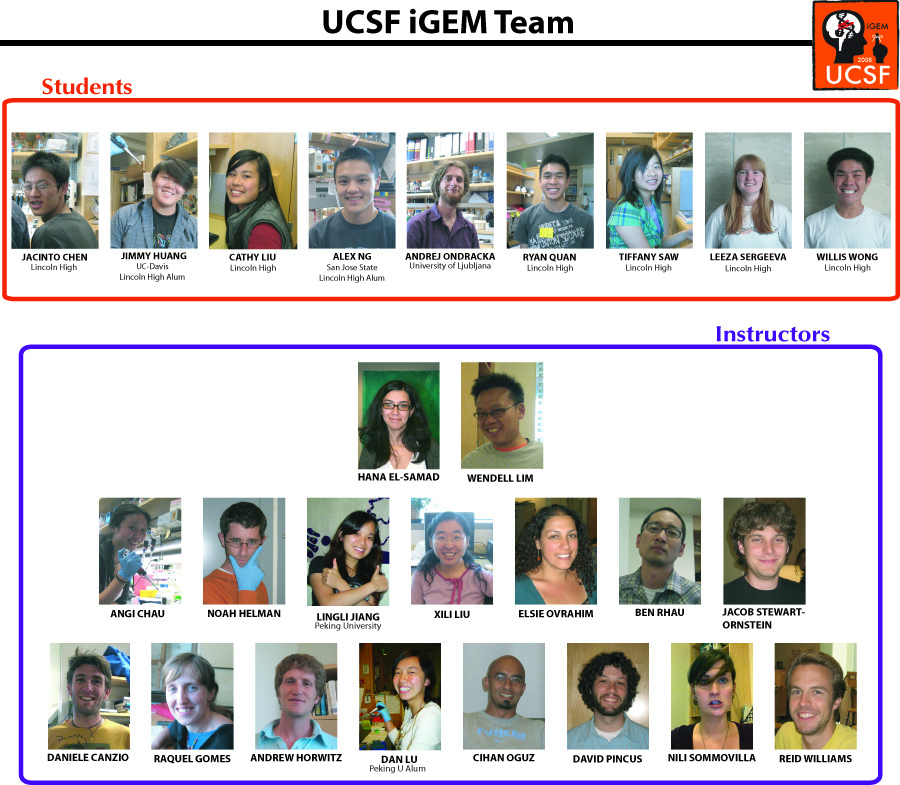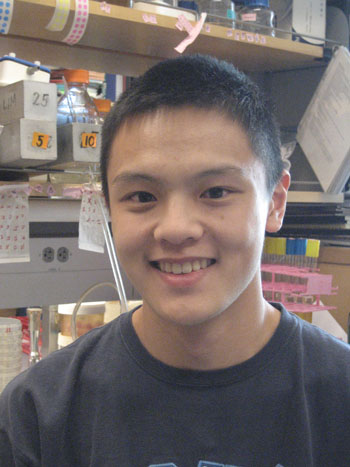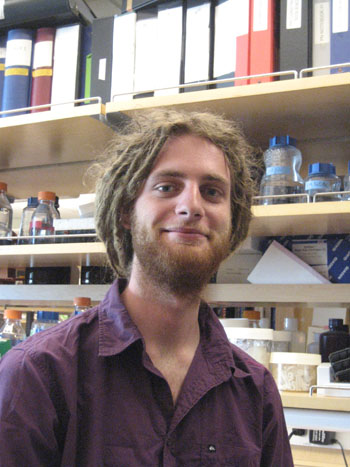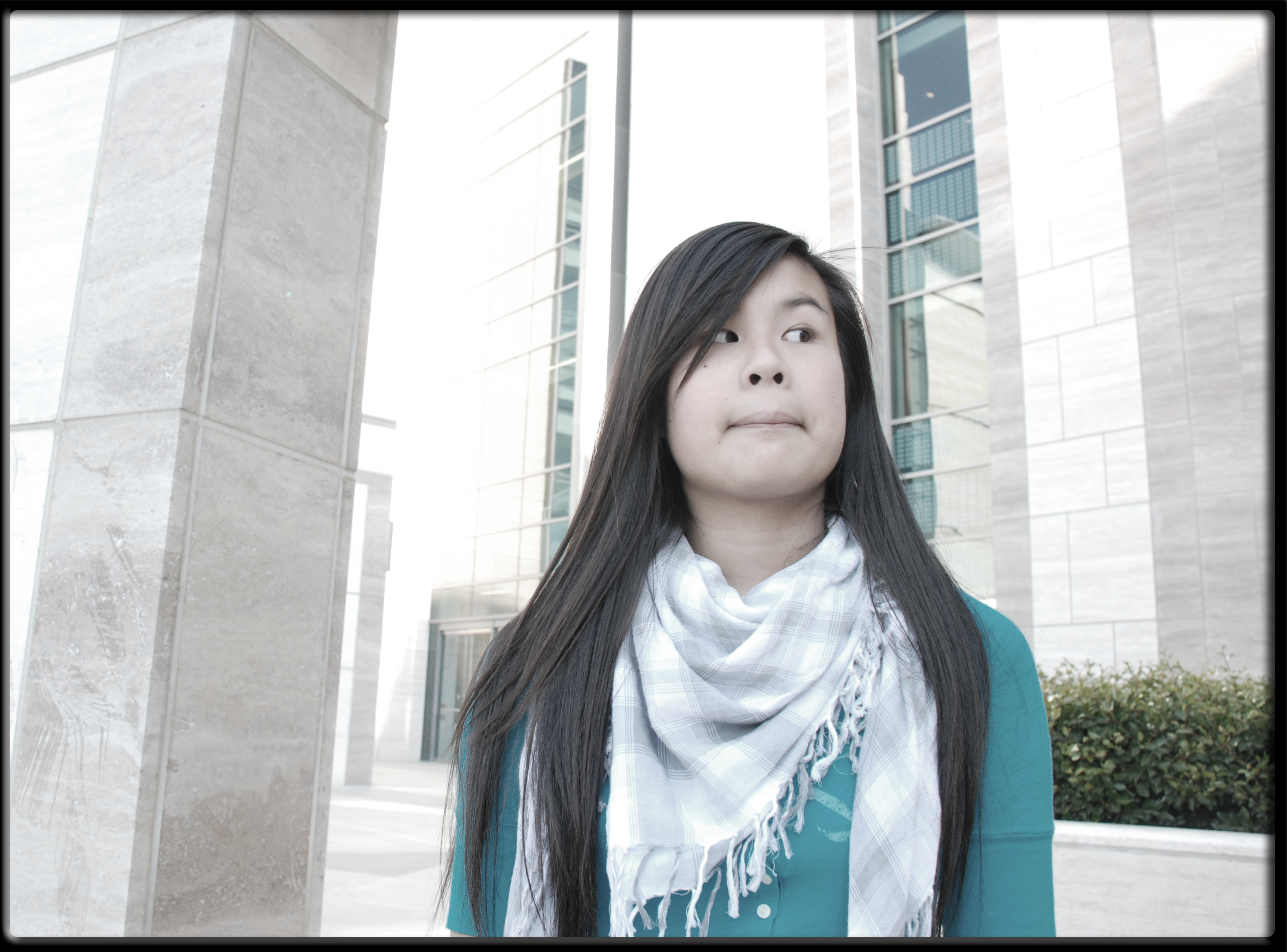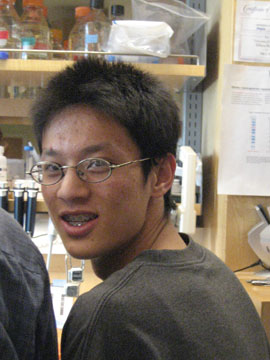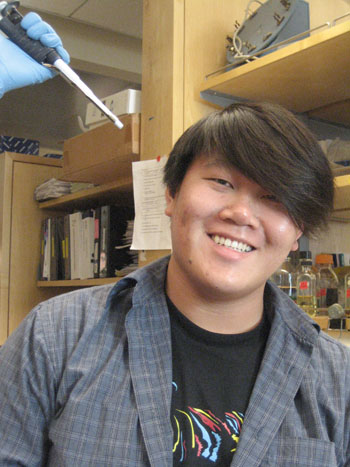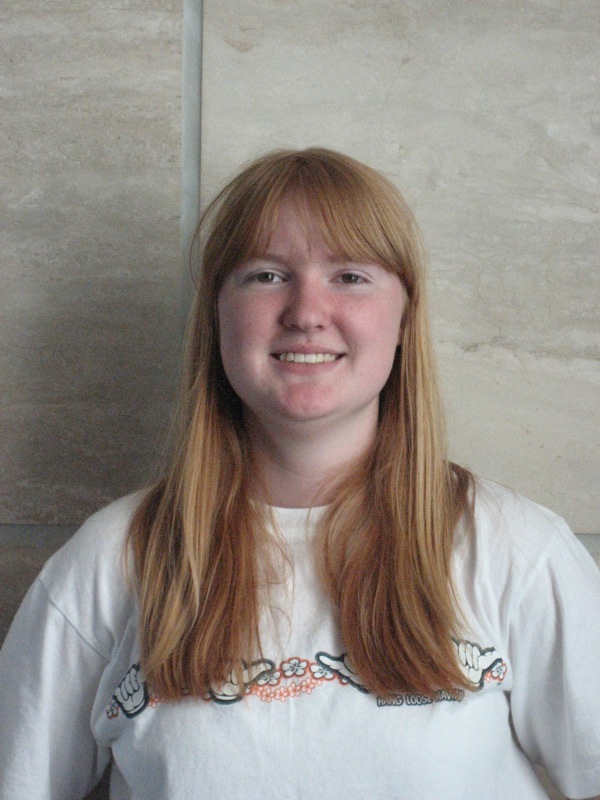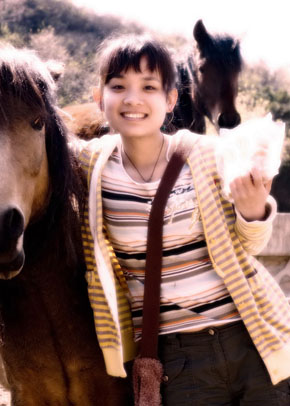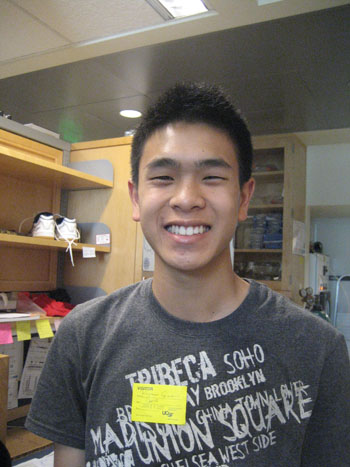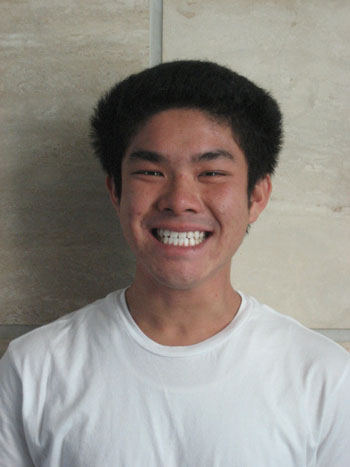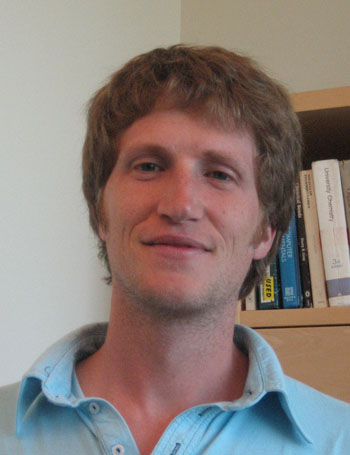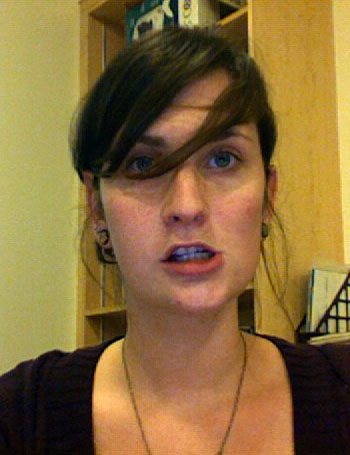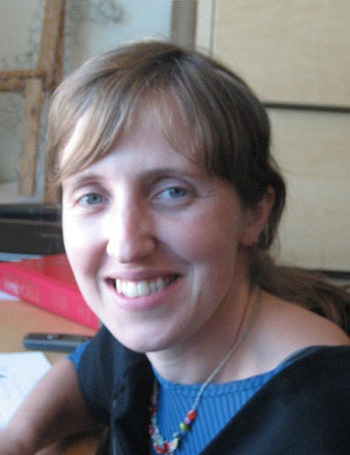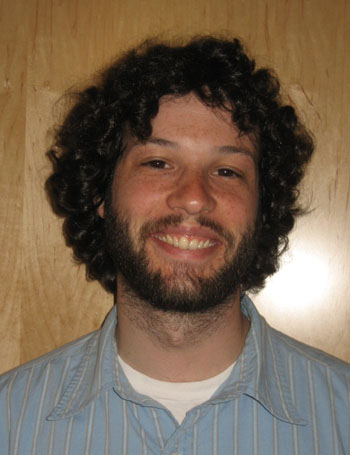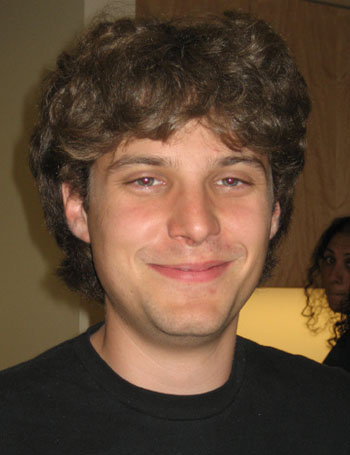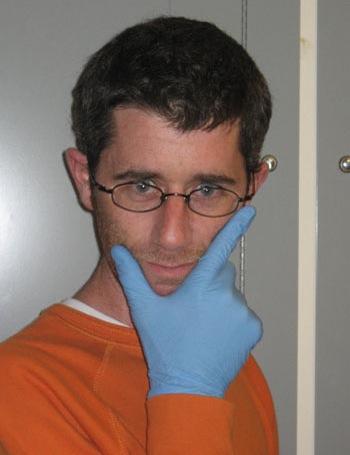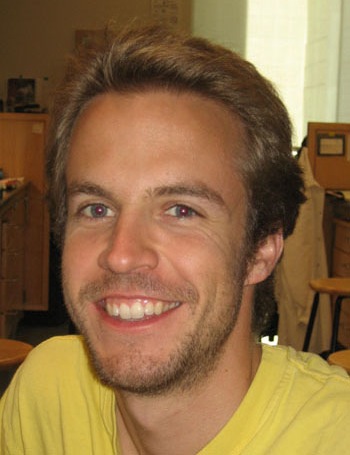Team:UCSF/Team
From 2008.igem.org
(→Where we're from) |
Raquel Gomes (Talk | contribs) |
||
| Line 1: | Line 1: | ||
{|align="right" | {|align="right" | ||
| - | [[Image: | + | [[Image:UCSF Team.jpg]] |
|- | |- | ||
| | | | ||
Revision as of 18:12, 22 October 2008
| Our team is composed of six high school students and three undergrads. The high school students - Cathy, Jacinto, Leeza, Ryan, Tiffany and Willis - are from Lincoln High School in San Francisco. The undergraduate students, Alex and Jimmy, are from San Jose State and UC Davis in California, respectively, and Andrej from University of Ljubljana in Slovenia.
Team Members
What we didFor iGEM 2008, we spent the summer adapting heterochromatin/silencing as a novel controller for gene expression in synthetic biology. The idea to work in the area of heterochromatin arose in early 2008 as part of discussions between the Lim lab and George Cachianes (Lincoln High School biotech program director), who had introduced his students to epigenetics earlier in the year. Andrew and Nili (Lim Lab) met with the participating Lincoln High students several times in April and May to discuss epigenetics, brainstorm project ideas, and get the students started on an after-school “pre-project”, investigating whether over-expression of a panel of chromatin-related genes might enhance our ability to silence transgenic loci (it does, see our project page!). In several group discussions at the beginning of the summer, we identified a range of synthetic biology goals that might benefit from the use of heterochromatin/silencing. The concept of a “yeast immune system” arose in these discussions—essentially, yeast engineered to differentiate at the epigenetic level in response to detection of a pathogen. We then spent the rest of the summer working up and characterizing the parts that would be necessary to build it (3 months goes fast)! Thus, yeast will have to remain immune-compromised a little while longer… Who did it?As part of his postdoctoral work studying feedback at the level of the histone tail, Andrew Horwitz established the original LexA-Sir2/LexA operators system. All other work was completed by the students, with mentorship and technical advice from their buddies: During their pre-project in May/June, the Lincoln High School Students, under the supervision of George Cachianes, cloned a panel of chromatin-related genes into yeast over-expression vectors and identified Sir3 and Ssn8 as factors that were limiting for silencing. This was later used to “push” weakly silenced bits, expanding the range of promoters that could be silenced. Willis Wong (Inputs group) explored alternative inputs for the induction of silencing, including GPCR-mediated signaling and light inducible dimerization. Alex Ng and Ryan Quan (Silencing Group) investigated the relationship between promoter strength and silencing by generating a “matrix” of yeast strains with variations on the basic silencing bit. This work defined the range of promoters that can be used for synthetic silencing of a given target promoter. They also demonstrated that silencing is dominant over moderate transcriptional activators. Jimmy Huang cloned and tested the regional silencing constructs, and also worked on feedback mechanisms to “lock in” silencing. Leeza Sergeeva and Tiffany Saw, of the Antisilencing Group, worked on developing ways to un-silence a gene. Leeza also helped with the modeling effort and tested the Shuttle vector system by converting a few candidate AarI parts into BioBricks. As part of the Outputs group, Jacinto Chen and Cathy Liu worked on silencing alternative genes (e.g. filamentation mediators, antimicrobial peptide genes). Jacinto Chen also characterized the distance dependence of silencing and is working on identifying sequence elements that enhance (protosilencers) or limit (boundary elements) the spread of heterochromatin. Andrej Ondracka worked on the modeling project with Angi Chau, Cihan Oguz, and Hana Al-Samad. In the lab, Andrej constructed and tested alternative DNA binding domain/operator pairs (e.g. Tet repressor fusion targeted to Tet operators, LacI fusion to Lac operators etc) to facilitate the construction of a heterochromatin-based toggle switch. Andrej also designed a shuttle vector for conversion of AarI parts into the BioBrick format. Dan Lu conducted the cooperativity/timecourse experiments using a dual-fluor strain constructed by Alex Ng. The presentation was designed by the presenters, Andrej, Cathy and Tiffany, with help from Raquel Gomes, Andrew Horwitz and Wendell Lim. All team members contributed to building the wiki, which was coordinated by Raquel Gomes. Many thanks to Arsenia deGuzman, who maintained media stocks, glassware and other necessities.
(Or you can choose different headings. But you must have a team page, a project page, and a notebook page.) |
 "
"
